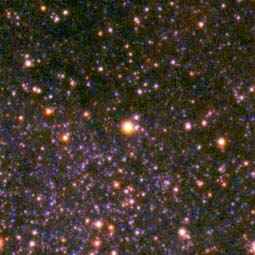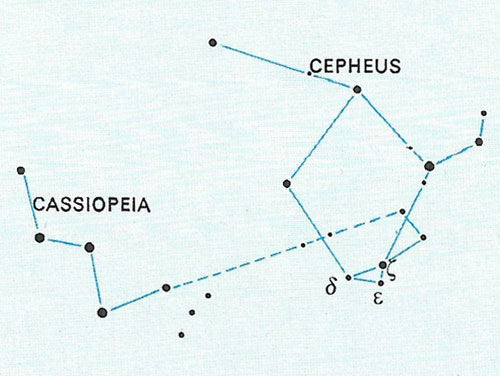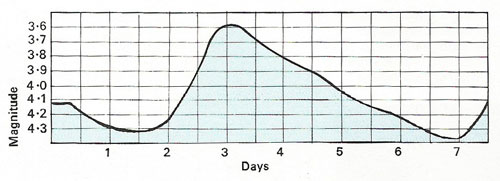Delta Cephei

Figure 1. Delta Cephei. Image: © T. Credner & S. Kohle, AlltheSky.com.

Figure 2. Location of Delta Cephei.

Figure 3. Light curve of Delta Cephei.
Delta Cephei is the second Cepheid variable to have been identified and the prototype for the category known as Type I Cepheids, or Delta Cephei stars. With a change in apparent magnitude of 3.5 to 4.4 over a period of 5.366 days, Delta Cep's entire range of variability can be followed with the naked eye.
At a declination of +58°, Delta makes a perfect target for northern observers, especially those who see Cepheus as a circumpolar constellation. Also, it lies conveniently between two bright stars that shine close to each end of its range of variability: Zeta Cep (magnitude 3.6) and Epsilon Cep (magnitude 4.2). For those observing with binoculars or a modest telescope, Delta Cep's companion stars can be discerned. A seventh magnitude mate is located 41" from the variable itself and is thought to be physically associated with it. A second nearby star of 13th magnitude, located 20.9" from Delta, is most likely a line-of-sight object.
| visual magnitude | 4.07 (mean) |
| absolute magnitude | -3.47 |
| spectral type | G2Ib |
| temperature | 5,500–6,800 K |
| luminosity | 2,000 Lsun |
| mass | 5 Msun |
| distance | 890 light-years (273 pc) |
| position | RA 22h 29m 12s, Dec +58° 25' 08" |
| other designations | 27 Cep, HR 8571, BD +57°2548, HD 213306, SAO 34508, FK5 847, AAVSO 2225+57, IRAS 22273+5809, HIP 110991 |


